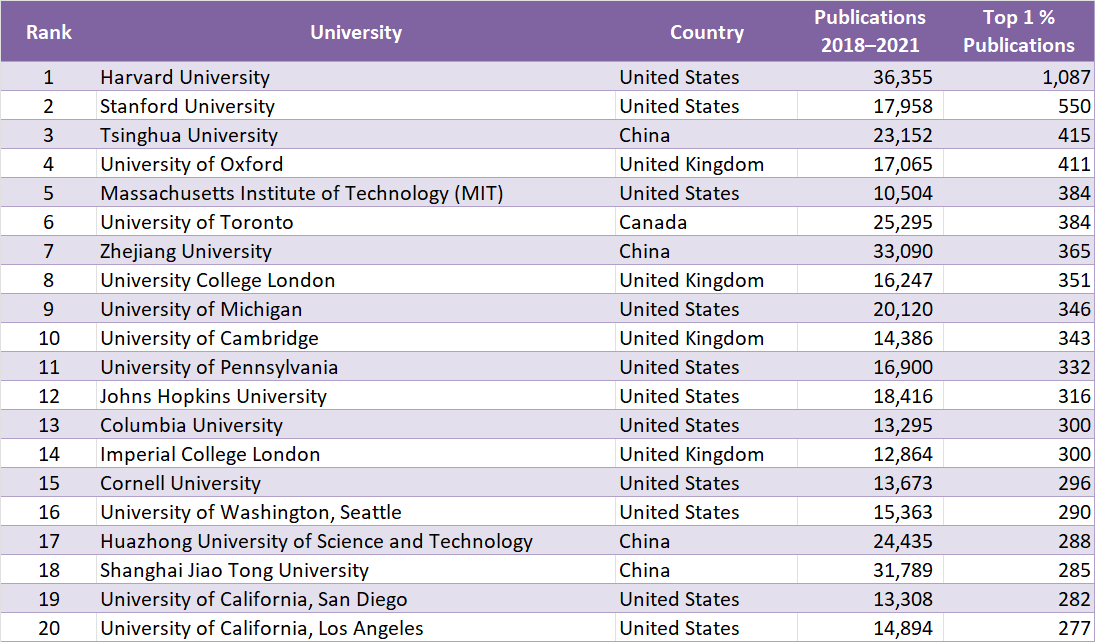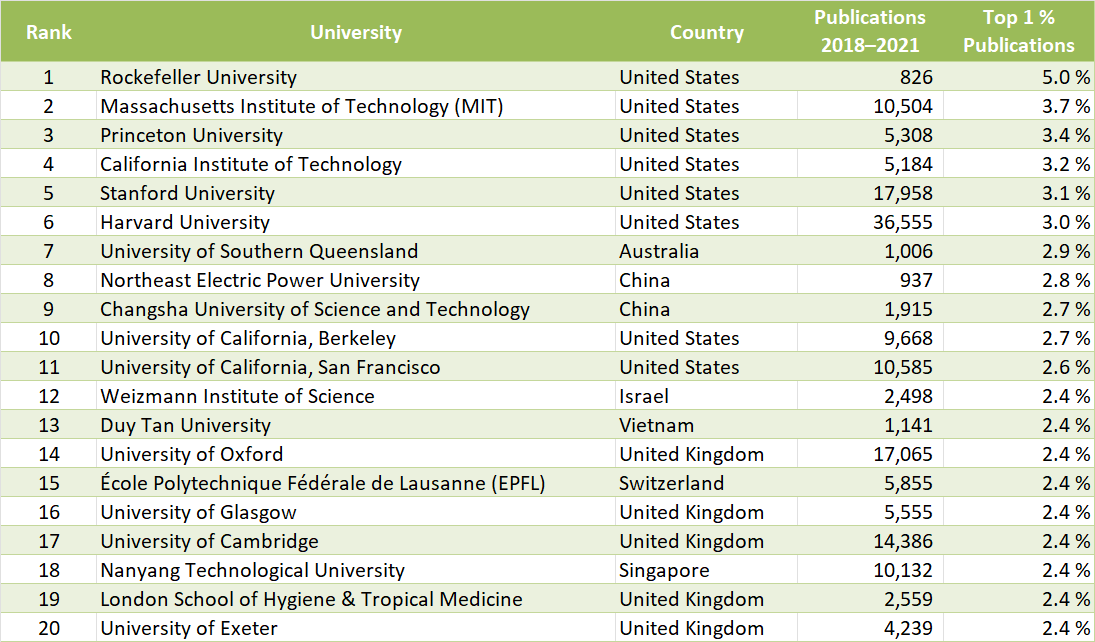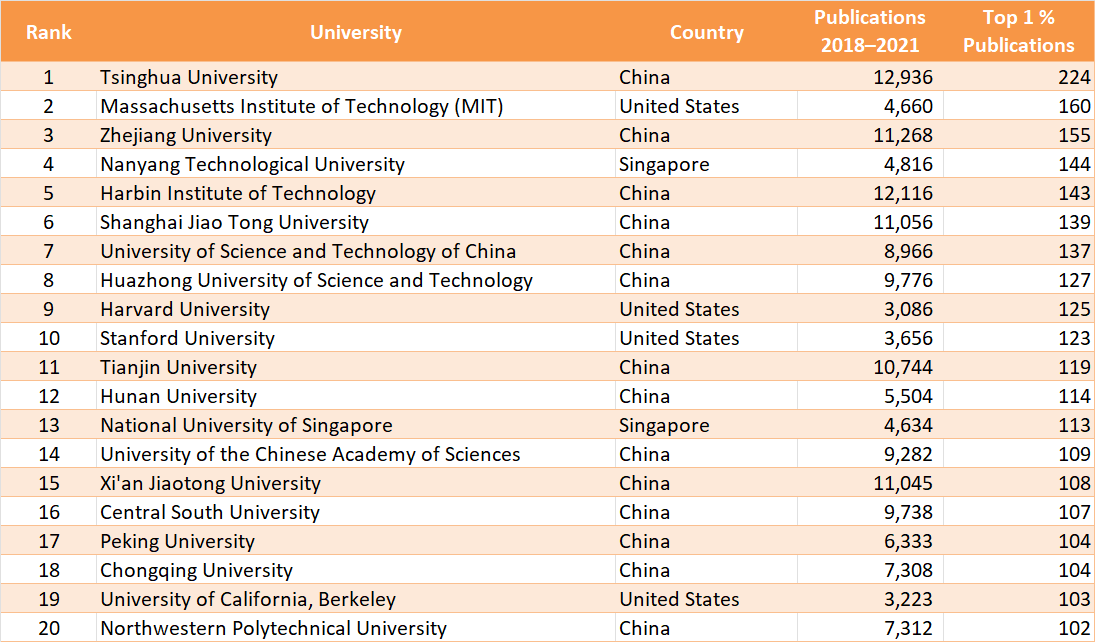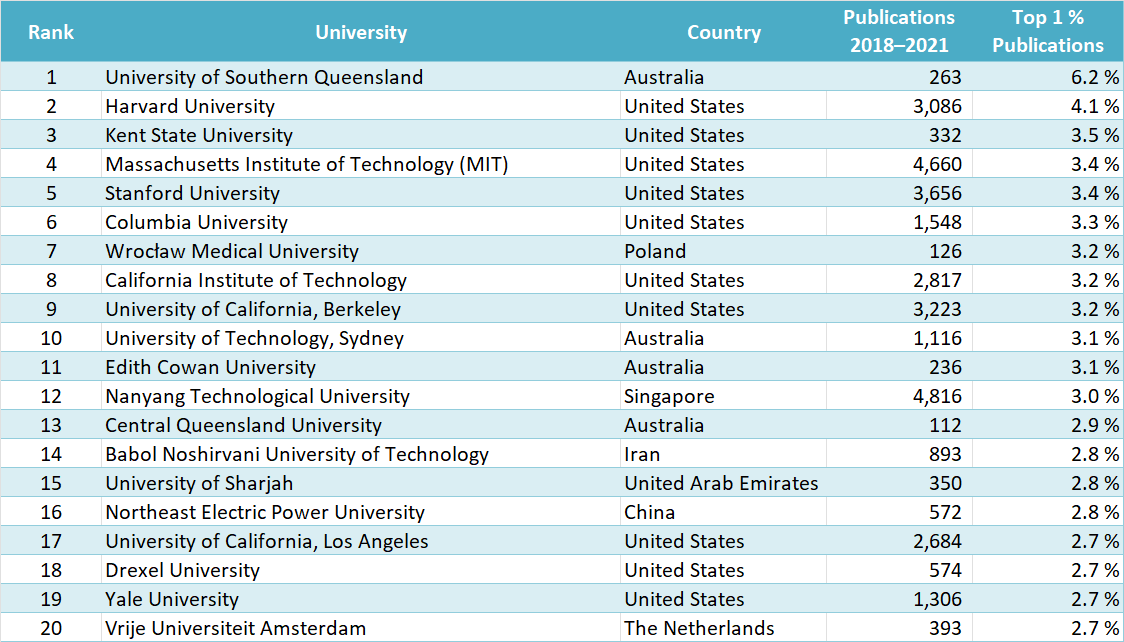The CWTS Leiden University Ranking for 2023 has been published by the Centre for Science and Technology Studies, Leiden University, The Netherlands. The Leiden Ranking is based on bibliographic data from the Web of Science database by Clarivate. It provides a rating that is based on the absolute number of top-cited publications (which is size-dependent), as well as a size-independent list, where the performance of a university’s publications is measured relative to its publication output.
This year’s list includes 1,411 universities located in 72 countries. A university needs to have at least 800 fractionally counted publications in the most recent four-year time window (2018–2021) to be included. China has the largest number of universities in the ranking (273), followed by the United States (206), which is in line with the last three editions of the ranking. Three countries, Indonesia (Bandung Institute of Technology, Universitas Gadjah Mada, and University of Indonesia), Cameroon (University of Yaoundé I), and Kazakhstan (Nazarbayev University), are included in the ranking for the first time.
Size-Dependent Ranking (All Sciences)
(by the number of the university’s publications belonging to the top 1 % most frequently cited)

Size-Independent Ranking (All Sciences)
(by proportion of the university’s publications belonging to the top 1 % most frequently cited)

Size-Dependent Ranking (Physical Sciences and Engineering)
(by the number of the university’s publications belonging to the top 1 % most frequently cited)

Size-Independent Ranking (Physical Sciences and Engineering)
(by proportion of the university’s publications belonging to the top 1 % most frequently cited)

Methodology
The CWTS Leiden Ranking is based on bibliographic data covering the years 2018–2021 from the Web of Science database produced by Clarivate. Book publications, publications in conference proceedings, publications in journals are not indexed in Web of Science, and publications in languages other than English are not included.
The ranking offers the following indicators of the scientific impact of a university:
- P
The total number of publications of a university - P(top 1 %) and PP(top 1 %)
The number and the proportion of a university’s publications that, compared with other publications in the same field and in the same year, belong to the top 1 % most frequently cited - P(top 5 %) and PP(top 5 %)
The number and the proportion of a university’s publications that, compared with other publications in the same field and in the same year, belong to the top 5 % most frequently cited - P(top 10 %) and PP(top 10 %)
The number and the proportion of a university’s publications that, compared with other publications in the same field and in the same year, belong to the top 10 % most frequently cited - P(top 50 %) and PP(top 50 %)
The number and the proportion of a university’s publications that, compared with other publications in the same field and in the same year, belong to the top 50 % most frequently cited - TCS and MCS
The total and the average number of citations of the publications of a university - TNCS and MNCS
The total and the average number of citations of the publications of a university, normalized for field and publication year. An MNCS value of two, for instance, means that the publications of a university have been cited twice above the average of their field and publication year.
The ranking also includes indicators for collaboration, open access publishing, and gender diversity. It provides statistics for the following five fields of science:
- Biomedical and health sciences
- Life and earth sciences
- Mathematics and computer science
- Physical sciences and engineering
- Social sciences and humanities
- CWTS Leiden Ranking 2023,
Centre for Science and Technology Studies, Leiden University, The Netherlands
Also of Interest
- CWTS Leiden Ranking 2022,
ChemistryViews 2022.
Scientific performance of over 1300 universities assessed based on bibliometric indicators


![9 Tips for a Successful PhD [Tip 6]](https://www.chemistryviews.org/wp-content/uploads/2025/04/202503_9-Tips-for-a-Successful-PhD_Tip6-125x94.png)

![9 Tips for a Successful PhD [Tip 5]](https://www.chemistryviews.org/wp-content/uploads/2025/04/202503_9-Tips-for-a-Successful-PhD_Tip5-125x94.png)